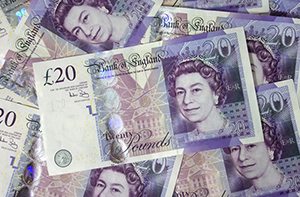The Bank of England has signalled an early warning to expats that the value of Sterling is on the slide and is like to continue slipping against other world currencies for some time.
The main reason is the possibility of inflation dipping below 1% looming over the coming months.
The target rate is to hit around 2%, but the Bank predicts a drop in the cost of living is on the cards as commodity prices decrease.
The price of oil has already plunged from more than $100 a barrel earlier in the year to just $72 a barrel in the past few days, although the price seems to be rallying.
Iron ore is down 40% and precious metals, like gold have lost their lustre. The spot price for gold has collapsed from a 12-month high of $1,385 an ounce in March to $1,203 an ounce now.
12-month low
Along with falling inflation and cheaper commodities, Sterling was ticking along nicely at $1.60 to $1.70 for most of the year, but has tumbled to $1.56 in recent weeks and is expected to decline further, says the Bank.
In fact, the Pound is at its lowest against the dollar for more than a year.
Do not forget the value of the Pound does not stand in isolation, so whatever decisions the Bank makes, monetary policy in Washington, Europe and further afield also has an impact on the Pound’s spending power as well.
Inflation in the USA and UK is about the same – 1.6% – but the dollar is on an upward trajectory while the Pound is waning.
In the Eurozone, fears of deflation have stalked the European Central Bank for months. The Pound has hit 1.26 euros against a 12-month high of 1.28 and is heading for 1.30 within a few weeks.
Expensive exports
Outside Europe, commodity currencies – the Australian, New Zealand and Canadian dollars – leapt to recent highs against the Pound and US dollar on the back of a 0.4% rate cut to 5.6% in China.
These shifts up and down show that the world’s currencies are inextricably linked and one nation’s decision to change policy can inflict economic woes on another.
The best example is Britain’s economic relationship with Europe. Europe is Britain’s largest trading partner, but the strengthening Pound is making British imports more expensive in the rest of the European Union.
According to the Bank, these monetary issues are a real worry that the British economy has not yet put clear water between growth and recession.
Interest rates for savers are likely to stick at 0.5% until at least the General election in May, when everyone will have to wait and see whether the incoming government tinkers with borrowing.

Europe is not Britains largest trading partner. Britain exports 9% of GDP to EU members, 21% of GDP to non EU members and consumes 70% of GDP internally.